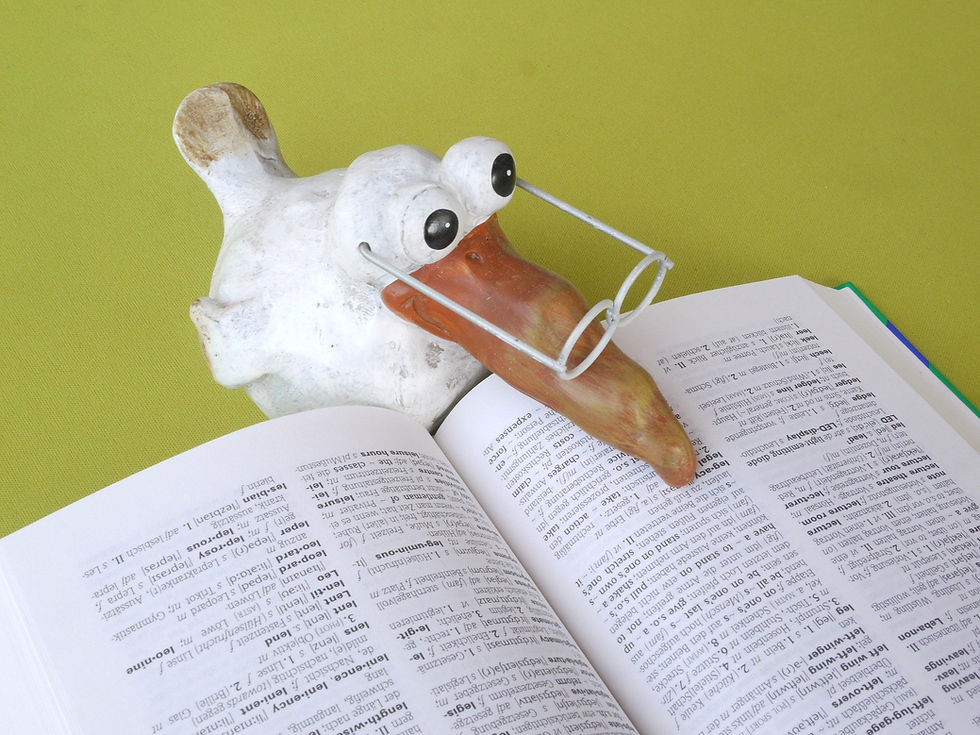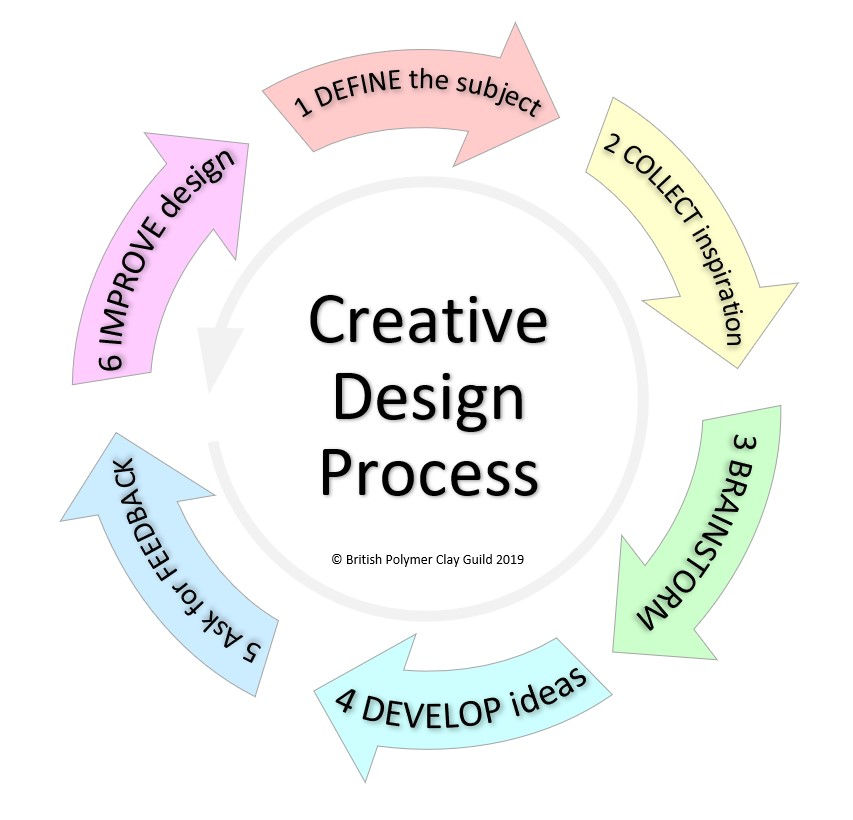E is for ... Environment
- lisa walker
- Nov 5, 2020
- 5 min read

The Environment is currently a hot topic, particularly when it comes to climate change and plastic pollution. As artists using a plastic-derived product, how can we answer questions about the material we use and how we are taking care to protect the environment?
These questions are coming up more frequently at exhibitions and fairs and in online forums, so I hope this blog post will help to have some facts at your disposal:

Polymer Clay manufacturers keep their recipes a closely guarded secret, but we know that polymer clay is based on polyvinyl chloride (PVC), plasticisers, binders and fillers. Vinyl is manufactured by polymerising (linking together) a chemical called vinyl chloride.
Vinyl is largely derived from salt — an abundant and inexpensive resource – and ethylene, which is derived from natural gas.
Vinyl products consume less energy, generate fewer emissions
and save more energy than many other types of plastic.
The first patent for a polymerisation process to manufacture PVC was granted to German inventor Friedrich Klatte in 1913 and PVC has been in commercial production since 1933. Polyvinyl chloride accounts for about 20% of all plastic manufactured worldwide and is the world's third-most widely produced synthetic plastic polymer, after polyethylene and polypropylene. About 40 million tonnes are produced per year.
In the grand scheme of products manufactured from PVC,
polymer clay constitutes a tiny fraction.
PVC is used in the production of hundreds of products that consumers encounter in everyday life, and many more that are encountered less frequently but are nevertheless important in construction, electronics, healthcare and other applications. PVC is used in these applications because of its low cost and desirable physical and mechanical properties. It is fabricated efficiently into a wide range of both rigid and flexible products. PVC also has inherent flame resistance. It is strong and resistant to moisture and abrasion, does not corrode and can be cleaned with mild cleaning products. Substitutes for PVC materials may be available, but often the alternative materials and processes are not as efficient, or substitution costs are high.
About three-quarters of all vinyl produced
goes into long-lasting applications.
Life-cycle studies show PVC/vinyl is effective in protecting the environment, in terms of low greenhouse gas emissions and conservation of resources and energy.
Whilst some vinyl products have an odour, the small amount of volatile organic compounds (VOCs) emitted will dissipate quickly through normal ventilation. Regulations strictly limit levels of vinyl chloride in the workplace and in emissions from manufacturing plants. Manufacturers convert as much vinyl chloride into PVC as possible to make maximum use of this raw material, then apply steam to strip out the remaining vinyl chloride so that levels in the finished vinyl are negligible.
Another component of polymer clay are plasticisers. Plasticisers, including phthalates are used in hundreds of products in our homes, hospitals, cars and businesses. Plasticisers are used in PVC to soften the vinyl, making it more flexible and durable. Plasticisers are bound into the PVC material in which they are added; they do not easily migrate out of the product or evaporate. Phthalates are commonly used in medical devices, general purpose PVC including use in the food industry, adhesives, inks, and cosmetics.
In addition to PVC and plasticisers, small amounts of zinc oxide (an inorganic compound most likely synthetically produced – non-toxic and also used in medicines, paints, cosmetics and food), kaolin (a silica-based mineral clay), as well as pigments and other fillers which are sometimes added to increase opacity, elastic modulus, or compression strength.
What are the issues?
Polymer clay is not the only ‘plastic’ art material: there’s acrylic paints, glitter, plasticine, glue, sticky tape, foam, ‘faux’ fabrics, etc.
PVC on its own can be recycled, but because of other additives in polymer clay, it can’t be recycled at present.
Not all polymer clay is made equal – cheap versions manufactured in countries with less strict safety standards may not meet UK or EU regulations. Stick to reputable brands you have heard of.
Some research has suggested a possible link with phthalates and detrimental effects on the human body. Staedtler, who manufacture the FIMO brand of polymer clay, has avoided the use of phthalate-based plasticizers in FIMO oven-hardening modelling clay since 2006 and states this on their website. Other manufacturers websites do not indicate if they do the same, but products sold within European and the UK must adhere to strict safety regulations.
Excessive heat can break the bonds of PVC releasing noxious fumes which can irritate lungs. Check your temperature settings every time you cure and work in a well-ventilated room.
The biggest problem with polymer clay is old unusable raw clay, failed cured projects, but most significantly, the residue from sanding, creating micro particles.
What can we do to mitigate the impact?

We want to create objects that will be loved and cherished
for a long time, that don’t need to be recycled or thrown away.
We hope that over time, manufacturers will refine the product to either make it recyclable or to use more organic ingredients that are less impactful, in much the same way that other art materials have evolved over time. We don’t need to throw out what we already have, just because it’s made of plastic, in the same way that you wouldn’t throw out an old master painting just because it used paint with lead in it.
Take time to think about what you want to create, but don’t let it stifle your creative experiments. Failed projects are useful reminders about what went right and wrong in the design and serve as a reference to see how far your learning has come as you get more experienced. Small pieces can be reused as bead cores or fillers for larger sculptures. It’s just about being creative.
Polymer clay is such a versatile material, that it can used to
rejuvenate objects that might otherwise be thrown away.
For example, making new handles for cutlery, knobs for doors and drawers, new veneers for worn out boxes, mixed media projects, the list goes on…
Some old raw polymer clay can be revived with patience (see C for Conditioning) or chopped up to be used as a colourful inclusion in new clay.
However, one problem we do all need to address is sanding. For starters, I always recommend wet-sanding over dry-sanding. You don’t want to be breathing in small particles even if it is non-toxic. Always wet-sand if you need to sand at all, and do your sanding inside a bowl, not the sink, to contain the residue.
I’ve tried two methods to collect the sanding residue, rather than washing it down the sink:
The first was to try to strain the residue from the water. I used a coffee filter expecting that would catch all the particles, but the water was still cloudy.
My second method was far more successful. I poured the silty water into a jar and just left it somewhere warm, with the lid off, for the water to evaporate, leaving the sludge at the bottom.
At the moment, I am just collecting all the residue like this while I ponder what to do with it. Does anyone have any ideas?
I hope you found this particular blog post informative and interesting. It is an important topic of debate and we shouldn’t be embarrassed to discuss it. What environmental questions have you been asked and how did you answer them? Have you changed the way you are working with polymer clay?
Images: Pixabay






Comments